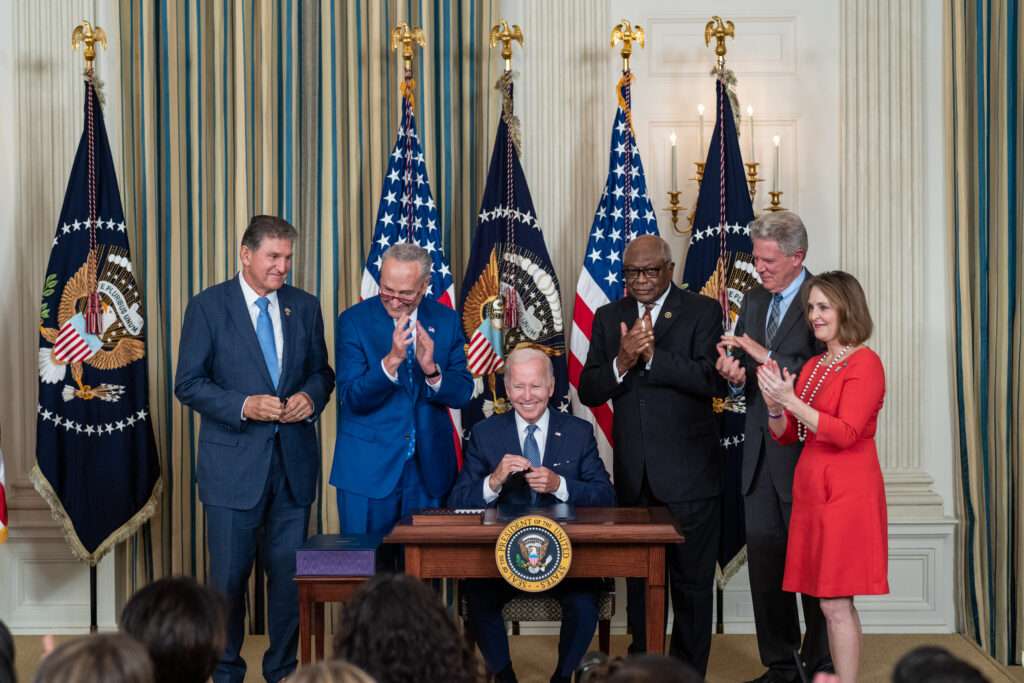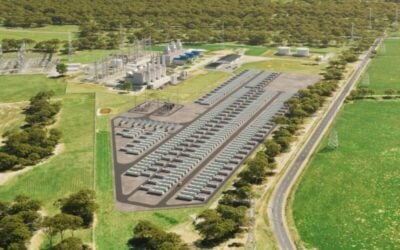
The Inflation Reduction Act’s incentives for energy storage projects in the US came into effect on 1 January 2023.
Standout among those measures is the availability of an investment tax credit (ITC) for investment in renewable energy projects being extended to include standalone energy storage facilities.
Enjoy 12 months of exclusive analysis
- Regular insight and analysis of the industry’s biggest developments
- In-depth interviews with the industry’s leading figures
- Annual digital subscription to the PV Tech Power journal
- Discounts on Solar Media’s portfolio of events, in-person and virtual
Alongside the rest of the act’s US$369 billion package of climate spending, the change has been forecast to transform the US clean energy industry, bringing certainty for investment into deployment as well as manufacturing.
The Inflation Reduction Act (IRA), and primarily the storage ITC, have prompted analysts at the likes of BloombergNEF and Wood Mackenzie Power & Renewables to up their forecasts for energy storage installations significantly.
Previously, storage projects were only eligible for an ITC if paired directly with solar PV and the storage system charged directly from the solar.
The standalone option now decouples developers from this need, opening the possibility of charging directly from the grid, and reducing the development timeline of storage projects, which require far less land than solar-plus-storage. Energy storage projects of 5kWh or more will be eligible.
The change brings the industry “to the next level,” according to American Clean Power Association energy storage VP Jason Burwen, who was formerly interim CEO of the national Energy Storage Association before the merger of the two trade associations at the start of last year.
“Starting today, all US #energystorage projects can avail a 30+% investment tax credit. Excited to see the industry go to the next level,” Burwen tweeted.
“Happy clean energy new year all!”
As mentioned by Burwen, the ITC can therefore reduce the capital cost of investment by about a third, or more, depending on whether projects meet certain criteria on using domestically produced materials or equipment, and whether unionised and local labour works on them.
The ITC, which was also extended for clean energy technologies like solar that it already applied to, lasts until 2034, although incentive levels start to climb down towards the latter end of the regime. The storage ITC also includes a direct-pay option, which many commentators have said will simplify and speed up the process of monetising incentives.
‘Massive opportunity to decarbonise’
Even just a quick glance of Energy-Storage.news’ special year in review articles looking back on 2022 and looking ahead to 2023 shows how much the industry values the introduction of the storage ITC. Many in the industry had advocated and fought for the measure for years before the IRA’s surprise passing in late August brought it to reality.
“The passing of the Inflation Reduction Act in the US will be the next catalyst for energy storage and propel the market forward,” Tom Cornell, senior VP of energy storage at Mitsubishi Power Americas said when asked what the biggest steps forward taken in 2022 had been for the industry.
“Any mention of 2022 has to include the passage of the Inflation Reduction Act. For the first time, standalone energy storage will enjoy tax credit incentives similar to other renewable technologies. The industry deserved a pat on the back for never stopping to advocate for [the] storage ITC,” LS Energy Solutions’ director of strategy and analytics Ravi Maghani – himself a former industry analyst at Wood Mackenzie – said in response to the same question.
“The timing couldn’t have been better as there’s a massive opportunity in front of us to decarbonise the power grid and storage will have a key role to play in getting there.”
A 183-page guide to the Inflation Reduction Act’s clean energy and climate investments, published by the White House can be viewed and downloaded here.
Energy-Storage.news’ publisher Solar Media will host the 5th Energy Storage Summit USA, 28-29 March 2023 in Austin, Texas. Featuring a packed programme of panels, presentations and fireside chats from industry leaders focusing on accelerating the market for energy storage across the country. For more information, go to the website.






